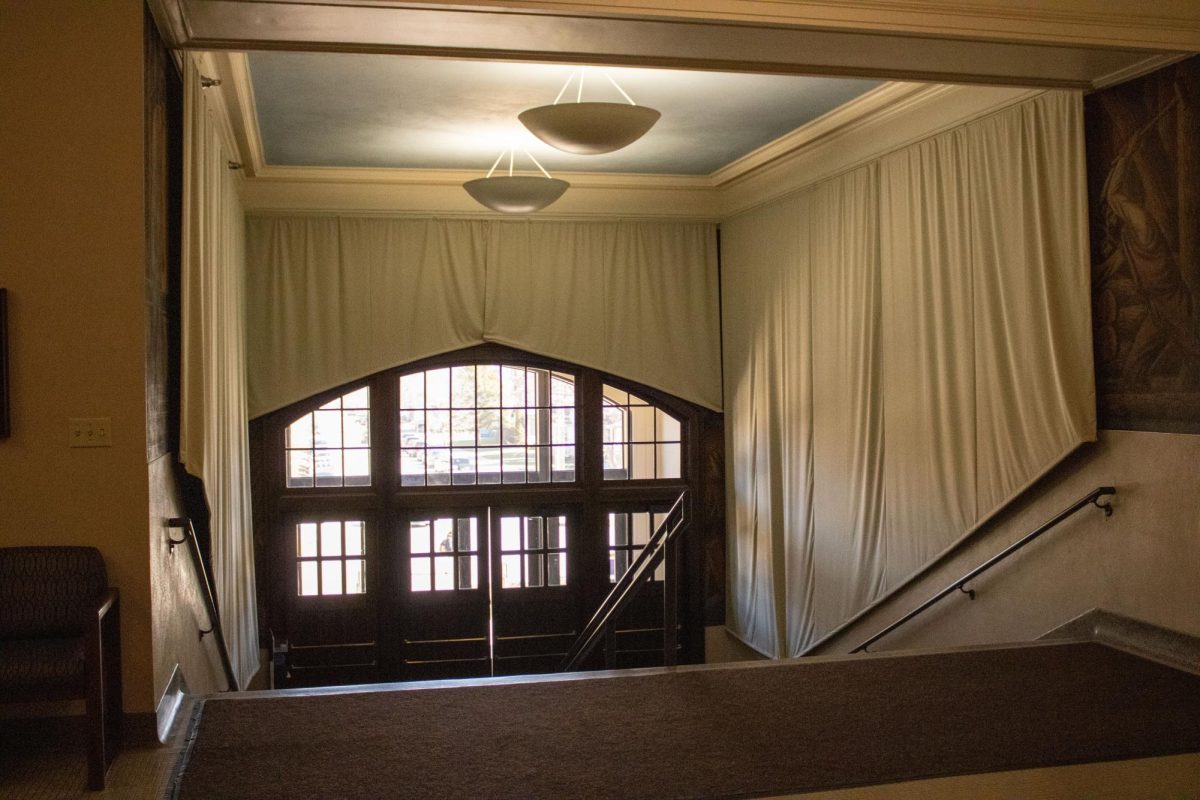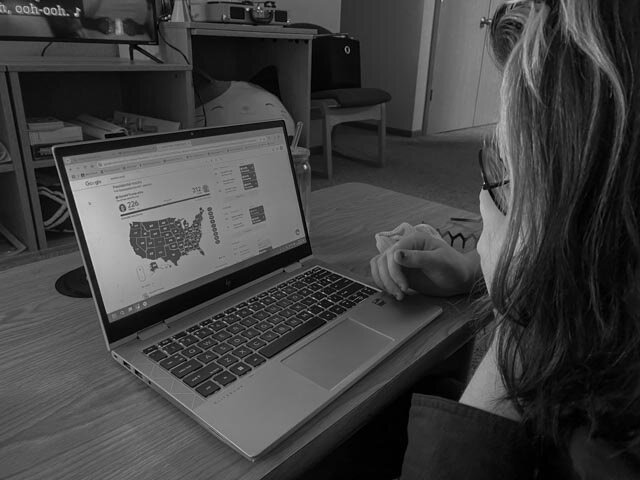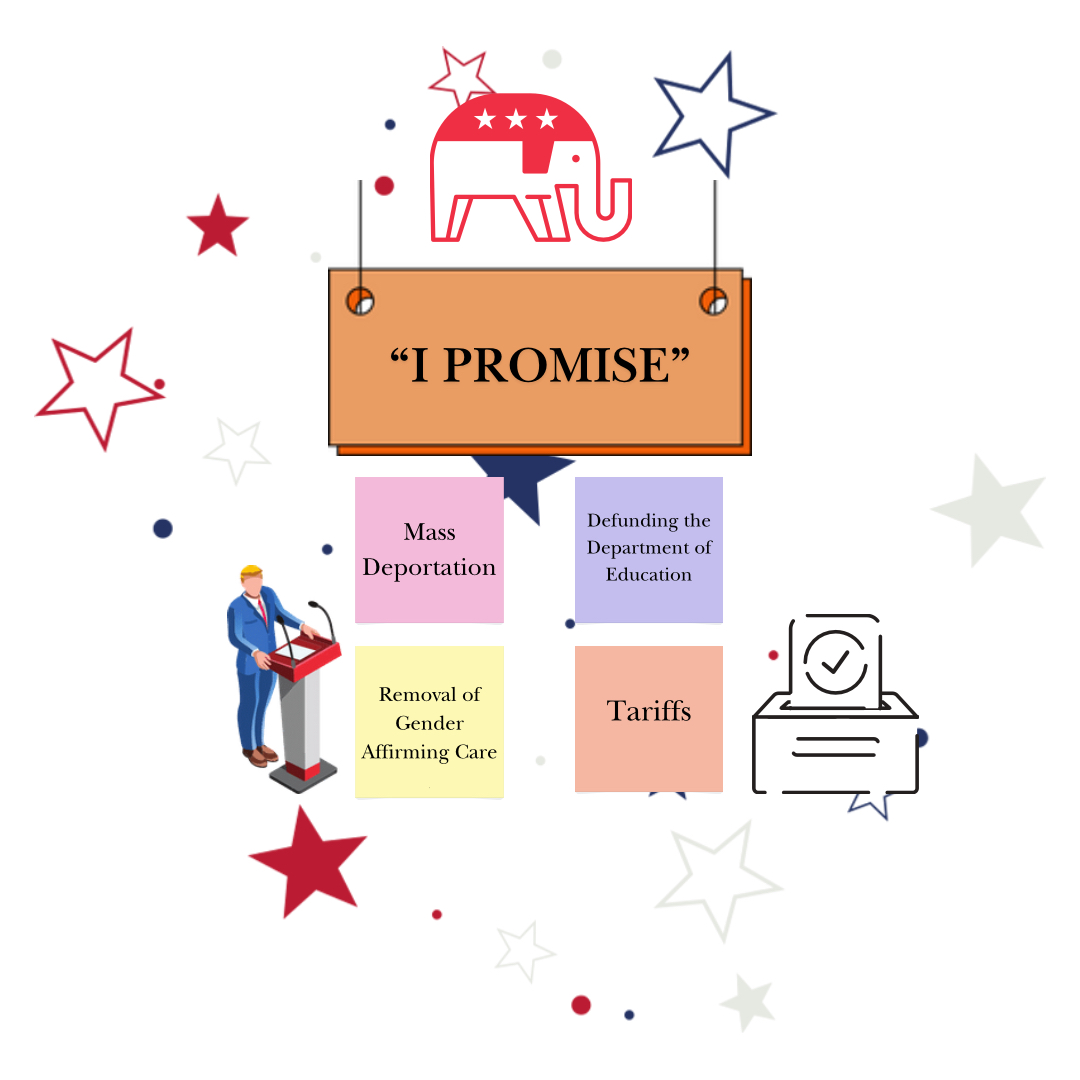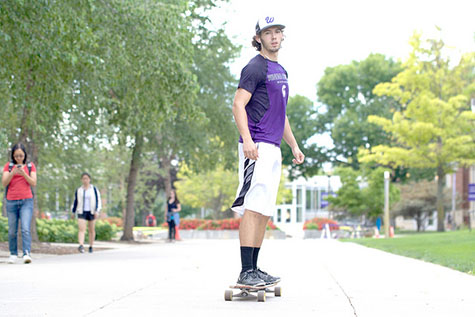
Kilat Fitzgerald / Winonan
A student’s daily commute to class can be an obstacle course of people rushing through campus. So, when it comes to the unique traffic of pedestrians, bicyclists, longboarders, skateboarders, rollerbladers, unicyclists and people driving vehicles, there are plenty of reasons to watch where you are going.
With many students longboarding on a daily basis, no one is a stranger to the sound of four polyurethane wheels rolling along the pavement. The sound of gears shifting on a bicycle adds another tune, right before they zip past the crowd and seamlessly merge onto sidewalks and streets.
During the hustle against the clock, a routine commute on and off campus has the potential for a collision.
But there are simple common courtesies that should be practiced every day in order to prevent potentially dangerous accidents from occurring, according to Winona Police Officer and Community Liaison Bridget Klinger.
“Bikes should be on the road, going with traffic. Not on the sidewalk. It’s best to be away from people that are trying to walk, “ Klinger said. “With people being distracted nowadays, be ever vigilant. We can’t catch everybody looking at their phones. Try to make eye contact with the drivers. We encourage people, especially students, to use the Seventh St. bike lane that basically connects the campuses.”
Traffic laws state that a car must provide three feet of clearance when passing a bike.
“As a bicyclist, you’re also concerned about doors, so you’ll be riding out a little bit more.” Klinger said. “So if you hear a vehicle behind you, do your best to move over so they can pass you safely.”
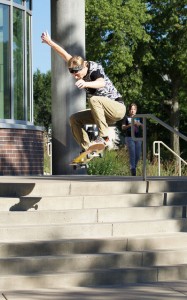
But having full awareness of one’s surroundings while driving a vehicle may require more diligence and less distraction than some would prefer.
“Don’t have headphones on,” Klinger said. “If you do, turn it down so you can hear the road noise. Driving a car with both headphones in is illegal.”
A little known law that only applies to the downtown area could also make one think twice about their transportation decisions.
“There is an ordinance from Sixth St. to the river, and from Huff to Franklin. It is illegal to be on a longboard, skateboard or roller blades. That is considered the downtown area. Just know that there is a possibility that you could get a ticket for it.”
Another challenging element while riding around town as the autumn days get shorter is darkness. Klinger said to make sure to have a white light on the front of one’s bike and a red light on the rear.
“Do whatever you can to make yourself more visible. All black, no light on your bike, you’re going to flag [police] as suspicious. The city is working with Xcel Energy on changing some of the light bulbs to make them LEDs, which will make them brighter. The Pedestrian Safety Committee, which was made with Winona State and the city, is working on making the crosswalks safer. By doing that, we’ve also changed some of the painting from lines to blocks, so they’re more visible to the drivers.”
Though there are numerous differences between cars and bikes, they do share basic principles.
Klinger said, “You don’t have a motor, but you are a vehicle on the roadway. A longboard would be considered more of a pedestrian. It’s kind of a fine line as to what’s a vehicle and what’s not.”
But some students on campus believe there is a simpler way to view the concern of transportation safety.
“Just don’t board around or drive around like a dumbass,” senior public relations major Amidu Jalloh said. “It’s not that hard if you know what you’re doing.”
However, the dynamic between motorists and pedestrians does not have to be antagonistic.
“There’s pedestrians that don’t care and drivers who don’t care,” Alex Kopperud, a senior advertising major said. “They’re both headstrong, and that clash is really toxic. Like when people pull up to stop signs, and then they blow through the crosswalk without looking to see if people are crossing. I’ve almost got hit on my longboard multiple times. Or people who are trying to turn and turn in front of you even though you’re riding right alongside them in the bike lane.”
Many common rules of the road can be and are agreed upon every day, but everyone makes mistakes at some point or another.
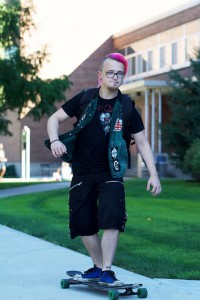
“It’s hard to weave around people,” senior physical education major Tyler Krueger said. “They accidentally step in your way because they’re not looking. They just hear the noise and they’re like ‘I [have to] get out of the way’ then they accidentally step in the way of where you were going. Then you have to get off and go around them.”
Besides the people themselves, the cars driven present a more imposing obstruction. “This one time I was going down the road and almost got hit by a car. That was my own doing because I should have been paying attention. They weren’t very happy,” Kruger said
Katie Gottstein, who commutes from Fountain City, takes a steadier approach to safe travel.
“I try to pay attention pretty carefully, but I’ve definitely noticed walkers and bikers not pay attention. I don’t honk or anything, I just watch out for them and look around to make sure everybody else is watching out for them too. I usually try to make eye contact, sometimes they look just to make sure I’m stopping,” Gottstein said.
As the semester continues, the colder weather will encourage more traveling by foot, but until then students and community members are advised to keep their eyes on the road and ears open to oncoming traffic.








































